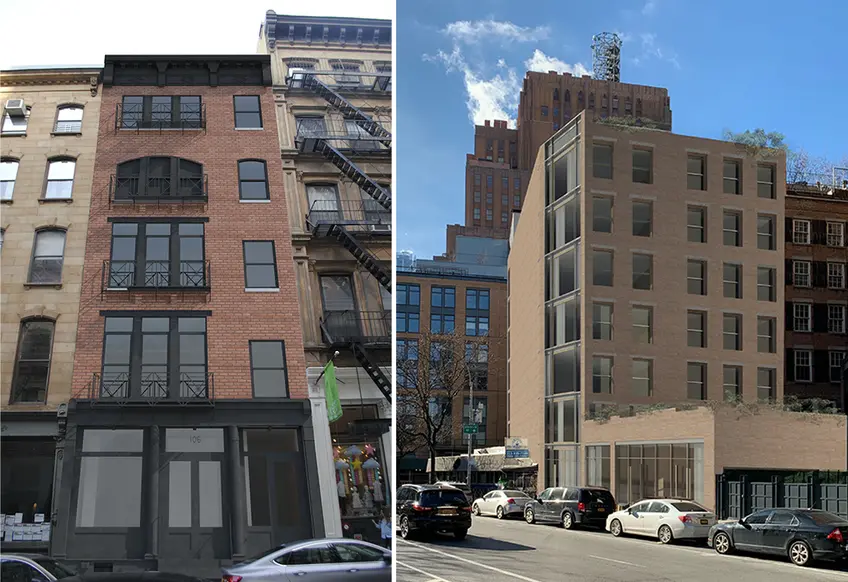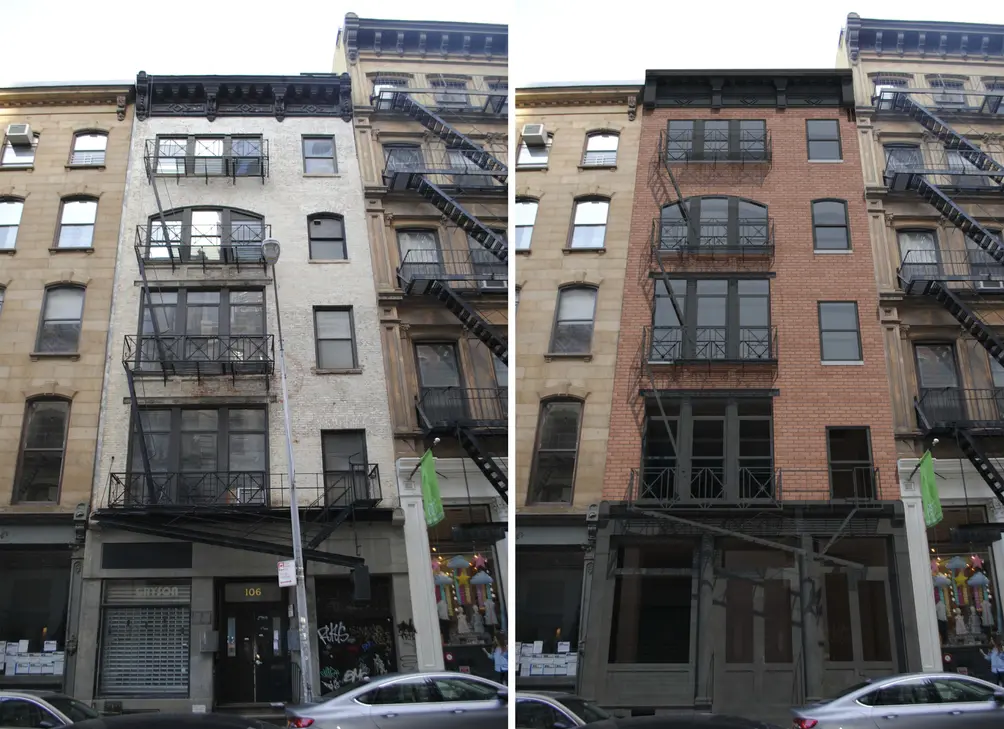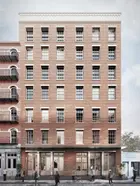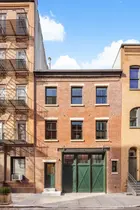 Up for review tomorrow is a restoration of106 Franklin Street and 31 Leonard Street in Tribeca via Landmarks Preservation Commission
Up for review tomorrow is a restoration of106 Franklin Street and 31 Leonard Street in Tribeca via Landmarks Preservation Commission
As new supertalls spring up all over New York, some despair at the prospect of the whole city's most timeless and unique architecture being torn down to make way for soulless new construction. Thanks to the Landmarks Preservation Commission ("Landmarks"), that isn't about to happen: Created in 1965 as a response to the loss of historically significant buildings (ahem, original Penn Station), it protects architecturally, historically, and culturally unique buildings by granting them landmark or historic district status, and then by regulating them after designation.
Landmarks is the nation's largest municipal preservation agency, and all hearings are open to the public. Here are some buildings and sites to keep an eye on in the hearings scheduled for Tuesday, February 5. The hearings will take place at 1 Centre Street.
Landmarks is the nation's largest municipal preservation agency, and all hearings are open to the public. Here are some buildings and sites to keep an eye on in the hearings scheduled for Tuesday, February 5. The hearings will take place at 1 Centre Street.
In this article:
 106 Franklin Street via Kutnicki Bernstein Architects for Landmarks Preservation Commission
106 Franklin Street via Kutnicki Bernstein Architects for Landmarks Preservation Commission
The Italianate style store and loft building at 106 Franklin Street was built in the late 1860's and still stands as a model of timeless Tribeca design. As a commercial to residential conversion begins, a presentation by Kutnicki Bernstein Architects calls for the fire escapes to be painted black after existing lead paint is removed. It is a minor change, but one that must nevertheless be approved by Landmarks due to its location in the Tribeca East Historic District. Its hearing will take place at 10:30 a.m.
While the Utilitarian-style buildings at 29-31 Leonard Street cannot be demolished owing to their location in the Tribeca West Historic District, they can be altered as long as Landmarks approves the changes. Silvera Properties bought the buildings last summer with plans for a residential conversion (h/t The Real Deal), and a presentation by GE-T Architects shows what this might look like.
Renderings show a tidied-up storefront with new windows and a new canopy. The facade will look somewhat different without the fire escapes and with new windows and new metal clad bulkhead. The paint will be removed, and the historic brick will be repaired and restored. Floor plans call for basement amenity space and storage, as well as a lounge, playroom, fitness center, and package room on the ground floor of the residential section. Apartments upstairs will be three-bedroom, two-and-a-half-bath units with private outdoor space. The hearing will take place at 10:45 a.m.
Renderings show a tidied-up storefront with new windows and a new canopy. The facade will look somewhat different without the fire escapes and with new windows and new metal clad bulkhead. The paint will be removed, and the historic brick will be repaired and restored. Floor plans call for basement amenity space and storage, as well as a lounge, playroom, fitness center, and package room on the ground floor of the residential section. Apartments upstairs will be three-bedroom, two-and-a-half-bath units with private outdoor space. The hearing will take place at 10:45 a.m.
The row house at 29 Downing Street dates back to 1829 and saw later alterations in 1870, 1920, and 1940 as a multi-family dwelling, garage, and studio with vernacular features. The latest proposed alterations are to the storefront and facade. New doors have been designed to match a tax photo from 1940, and renderings also show the removal of brick detail, new signage, and window enlargement and replacement. A Landmarks presentation, prepared because of the location in the Greenwich Village Historic District Extension II, cites several examples of garages on surrounding blocks. The hearing is scheduled for 1:30 p.m.




 6sqft delivers the latest on real estate, architecture, and design, straight from New York City.
6sqft delivers the latest on real estate, architecture, and design, straight from New York City.
